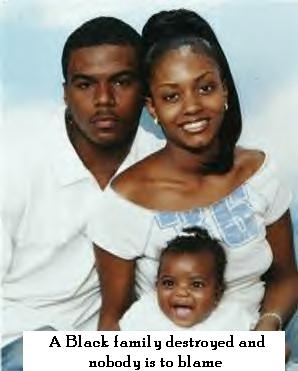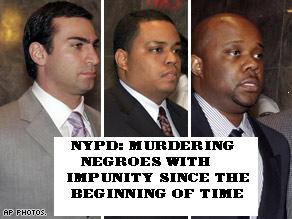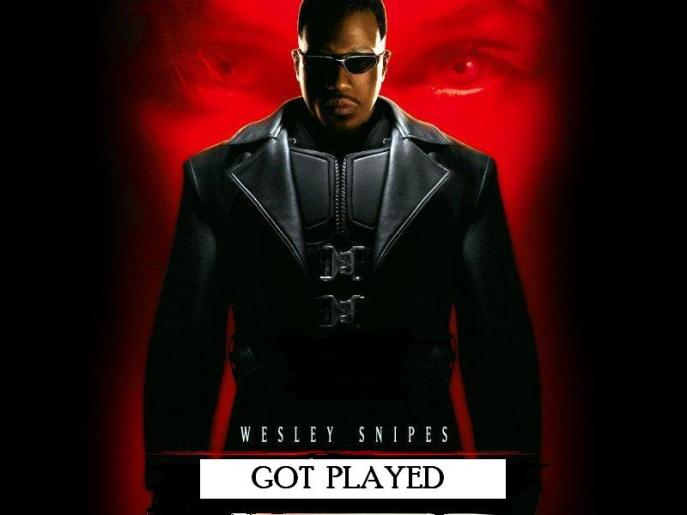I’m interrupting your regularly scheduled corporate propaganda to bring some disturbing news from the West Coast. Apparently, the post-racial America that signaled Barack Obama’s election as President of the United States is a fraud.
The two-minute video shows how quickly an unarmed black man can die while in the custody of unprofessional toy cops like those that police the Bay Area Rapid Transit System.

Oscar Grant, a 22-year old unarmed black man, was executed by a Bay Area Rapid Transit (BART) police officer on New Year’s Day.
Amnesty International’s Dalia Hashad, released the following statement:
When an unarmed man is shot in the back after police put him face down on the ground, it is the time for authorities to demand action, not patience. Days after the incident, the officer still has not been interviewed. The delay in this critical part of the investigation hints at the callousness to the worth of human life to a public that is all too familiar with racial profiling, police brutality and cover-ups. Whatever the final investigation reveals, the bottom line is that there is never justification to shoot an unarmed person, especially one who is restrained. It is an obvious violation of the most basic human rights standards, and a clear cut abuse of power.


The corporate media have taken to making excuses for the police by peddling the canard that the cop mistakenly went for his Glock instead of his Taser.
Junya, writing for the Black San Francisco Bay View, blows this pernicious lie to smithereens:
1. The manual states that the Taser X26 weighs 7 ounces. Depending on model and bullets loaded, a Glock pistol can weigh from 25-38 ounces. You don’t have to be a weapons expert to feel the difference between holding about two pounds and holding less than half a pound – try it.
2. Police pistols are all black, sometimes with a very dark brown grip. The X26 has bright yellow markings on it. It also has a 2-digit LED display.
3. The X26 has a safety on the grip that must be released. The Glock safety is on the trigger.
So let’s review the minimum steps of a Taser deployment:
1. You pull out the lightweight, brightly colored weapon. You load the cartridge onto the tip of the barrel. The cartridge is fat and rectangular, looking nothing like a pistol barrel.
2. You reach on the grip and flip the safety up. The LED display lights up like half of your digital alarm clock, then shows the percentage charge.
3. Police are taught NEVER to use Tasers in life-threatening situations (ensuring that the “Tasers save lives” mantra remains a fairy tale). So, since that eliminates the “split-second judgment” defense, every Taser policy I’ve seen requires a warning before firing, to give the victim the opportunity to comply. Police like to report that merely pointing the Taser and issuing the warning is often sufficient.
Most likely, this cockamamie rumor is spread by the police in order to buy time. It’s damage control, to pacify an angry public until they can come up with some way to blame the victim.
A small scale riot the other day confirmed that the lies, excuses, and spin hadn’t been effective in disguising an execution as a “mistake.” In a “post-racial” America, it would be nice if the deliberate, pre-meditated effort to cover-up an execution got an automatic federal investigation, followed up by prosecution.
Sadly, this has happened twice before and no prosecutions for murder or manslaughter were ever brought against the BART cops in those cases. They’ve murdered a naked, mentally ill man, and a 19 year-old boy erroneously suspected of armed robbery. The boy was shot in the back of the head. Both were black.
In the reality based community I live in, these incidents, taken as a whole, constitute a pattern or practice of misconduct that is actionable under federal law.
According to the U.S. Department of Justice:
…it unlawful for State or local law enforcement officers to engage in a pattern or practice of conduct that deprives persons of rights protected by the Constitution or laws of the United States. (42 U.S.C. § 14141). The types of conduct covered by this law can include, among other things, excessive force, discriminatory harassment, false arrests, coercive sexual conduct, and unlawful stops, searches or arrests. In order to be covered by this law, the misconduct must constitute a “pattern or practice” — it may not simply be an isolated incident. The DOJ must be able to show in court that the agency has an unlawful policy or that the incidents constituted a pattern of unlawful conduct.
BART cops have no civilian review board and are virtually unaccountable for their crimes. Based on the small amount of research I’ve found (here and here), it seems that they are following the same racist playbook that allowed them to justify questionable uses of deadly force and are simply hoping that the third time is a charm.
The Obama Justice Department, at the very least, should be monitoring this case to see what the local prosecutor does. If he does nothing, they should move swiftly on Civil Rights prosecutions against Johannes Mehserle and the rest of the officers in these old cases and use it’s power to force reforms in this rogue agency. “Change We Can Believe In” is either a slogan or a mantra with teeth—I’d like to see which it is.


